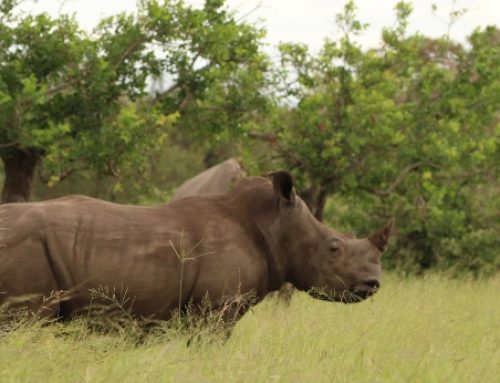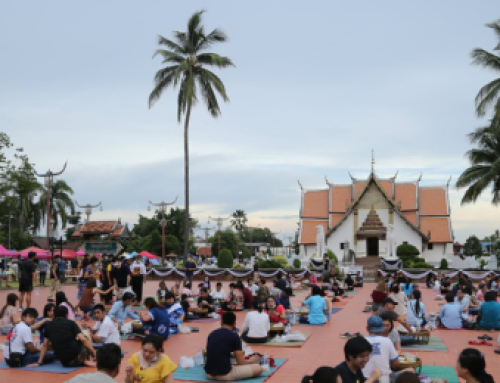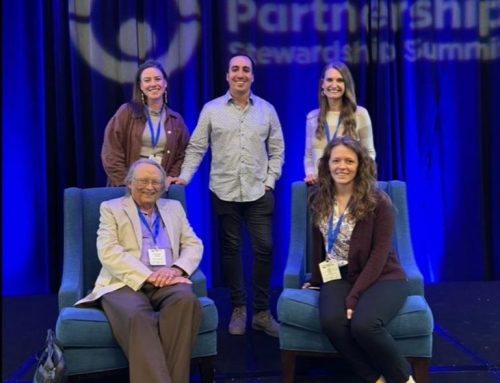Destination Stewardship Report – Spring 2022 (Volume 2, Issue 4)
This post is from the Destination Stewardship Report (Spring 2022, Volume 2, Issue 4), an e-quarterly publication that provides practical information and insights useful to anyone whose work or interests involve improving destination stewardship in a post-pandemic world.
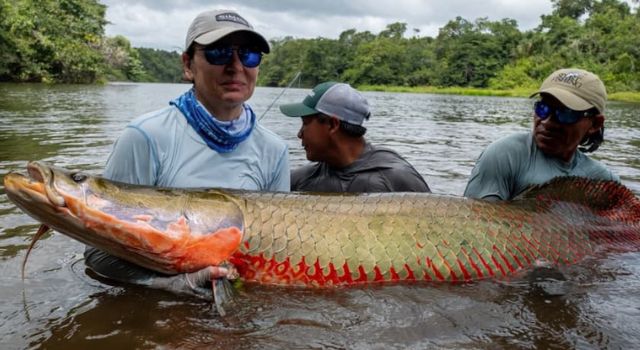
A mid-size arapaima fish. Photo: Rewa Ecolodge
Indigenous Guyanese Tap Tourism to Save Their Huge Fish
Another winner from the Top 100 – Green Destinations organizes the annual Top 100 Destination Sustainability Stories competition, which invites submissions from around the world – a vetted collection of stories spotlighting local and regional destinations that are making progress toward sustainable management of tourism and its impacts. From the winners announced last year, we’ve selected this one from Guyana, which showcases how indigenous traditions can help communities revive endangered natural habitats, supported by responsible tourism. Submitted by Carla James-Vantull, Director, Guyana Tourism Authority. Synopsis by Jacqueline Elizabeth Harper.
Traditional Reverence for Arapaima River Fish Powers Community-Led Tourism in Rewa, Guyana
The giant, powerful arapaima fish of the Guyana rainforest, also known as the pirarucú, can grow up to 15 feet and 440 pounds. Its armor of tough, heavy scales earns it the moniker “swimming dinosaur”. South America’s largest river fish, it was once so revered by Guyana’s indigenous communities that taking one was taboo. But outsider harvesting beginning in the 1970s broke down the traditional ban. By the turn of the century, the arapaima were endangered by overfishing. Villagers were becoming alarmed. Community-led tourism held promise for a solution, as the arapaima and its habitat suited both ecotouring and catch-and-release fly fishing.
Around 250 small Indigenous communities dot the map of Guyana. In one of these communities, Rewa, lack of economic opportunity forced a mass exodus of nearly 80% of residents over the years, leaving behind neglected farmlands and families torn by absentee husbands and fathers. Compounding these social struggles, the decline of the culturally significant arapaima added ecological pressure.
All this began to change when community-led tourism developed in the region.
In 2018, the Guyana Tourism Authority (GTA) launched the Community Led and Owned Tourism (CLOT) framework and toolkit, an initiative that has been instrumental in creating a positive impact within the Indigenous communities. The CLOT framework centers around “any Indigenous tourism enterprise owned and operated by the host community.” Unlike traditional models, the Indigenous community is at the forefront of activities and engagement with travelers. What’s more, CLOT also focuses on creating livelihood opportunities for young people and women through tourism.
There are six activities or steps for creating a CLOT framework:
- Readiness, Governance, & Action Planning: First, the community establishes a Tourism Committee, tasked with creating a tourism development action plan. It also includes raising community awareness, assessing community needs and visitor readiness, prioritizing Tourism Committee actions, and completing a market readiness diagnosis and market-product match.
- Building Capacity through Centralized and Hands-On Training: In this stage, peer-to-peer and shadowing training focus on topics such as business accounting, management and marketing, reservations and bookings, food safety and catering, etc.
- Developing Tourism Enterprises & Product: The community then determines what can and should be shared responsibly with visitors. From there, they develop and package tourism experiences that suit the local natural and tangible assets, as well as intangible cultural heritage angles.
- Establishing Market Linkages: This stage establishes market linkages and integrates market-ready products into the tourism value chain. Emphasis is placed on developing peer-to-peer experiences – homestays, in-home dining, and insider cultural experiences for instance – and then securing market access through sharing economy platforms such as Airbnb, Airbnb Experiences, Viator, EatWith, and Travelling Spoon.
- Marketing Community Tourism Offerings: After the community agrees on their products and offerings, this stage focuses on marketing strategic action plans and visitor-ready products, mainly through the Guyana Tourism Authority – posting on the GTA’s website and social media channels, planning fam trips, and so on.
- Marketing & Communicating Outcomes: The goal of this last stage is to implement a system for measuring and reporting the outcomes on a regular basis. Establishing a marketing dashboard and monitoring system that tracks and reports tangible results ultimately helps to share transparency with the community.
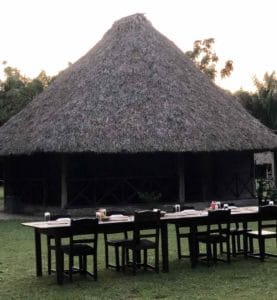
Rewa Ecolodge. Photo: Nicola Balram
Through this multi-step process, implementation of the CLOT framework and toolkit arms Guyana’s tourism sector with a way to help achieve national aspirations for becoming a green state, while simultaneously benefiting the local Rewa community and its future generations.
Through the CLOT framework, the Rewa Eco Lodge was born. Even with the challenges of closed borders and travel restrictions for approximately 5 months due to the pandemic, the Rewa Eco Lodge managed to sustain their 45 staff. And across the community, many youth in the Rewa community have had the opportunity to attain higher education. It has also allowed for enough financial sustainability to work with the Indifly Foundation and international experts to conduct studies and create a management plan to save the arapaima, and today, the arapaima population has been restored to more than 4,000 within the area – a triumph for this community.
The proven success of this framework in the Rewa community has led GTA to scale CLOT to other indigenous communities throughout Guyana. What’s more, the CLOT model has the potential to benefit communities in destinations around the world. Find the complete Good Practice Story from Rewa, Guyana, here (pdf).
About DSR Contributors
Volunteer contributors are welcome to the Destination Stewardship Report. Contact us with your proposals and ideas.


